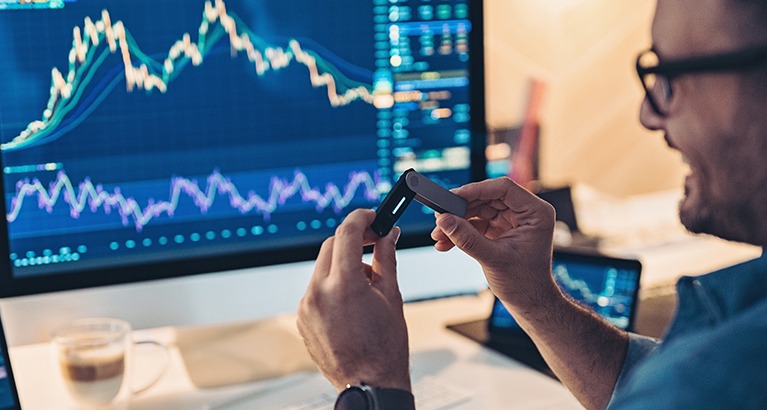
Trading Automation Crypto: The Future of Cryptocurrency Trading
In recent years, the world of finance has witnessed a seismic shift with the advent of cryptocurrencies and blockchain technology. Among the most transformative trends is trading automation, which has the potential to revolutionize the way traders engage with the market. As cryptocurrencies become more mainstream, understanding the mechanics and advantages of Trading Automation Crypto http://recursosanimador.com/scripts/librovisitas2.php?pagina=7779 has never been more important for both new and seasoned investors.
What is Trading Automation?
Trading automation refers to the use of software to create and execute trading strategies without the constant need for human intervention. Automated trading systems, often called trading bots, can analyze market conditions, interpret data, and execute trades at speeds beyond human capability. In the realm of cryptocurrencies, where markets can be volatile and operate 24/7, automation can provide a significant edge.
The Benefits of Trading Automation in Crypto
1. Efficiency and Speed
One of the primary advantages of trading automation is the speed at which trades can be executed. Automated systems can process vast amounts of data and react in milliseconds, taking advantage of market conditions before humans can even register the information. This efficiency can lead to better price execution and increased profits.
2. Emotional Discipline
Trading can be an emotionally charged endeavor. Automated trading helps eliminate emotional biases that can lead to poor decision-making. By following a preset strategy, traders can avoid common pitfalls like overtrading or panic selling, which often lead to losses.
3. Backtesting Capabilities
Automated trading platforms allow investors to test their strategies against historical market data. This backtesting process can provide insights into the potential effectiveness of a trading strategy before real capital is at risk. Traders can fine-tune their algorithms based on past performance, ultimately leading to more informed trading decisions.
4. Diversification
Manual trading can limit a trader’s ability to diversify due to time constraints and the sheer volume of market information to digest. Automated trading systems can manage multiple assets simultaneously. This capability allows traders to spread their risk across various cryptocurrencies and potentially increase their overall returns.
How to Get Started with Trading Automation
Jumping into trading automation requires careful consideration and the right tools. Here’s a step-by-step guide to help you start:
Step 1: Define Your Trading Goals
Before implementing an automated trading system, it’s crucial to define your objectives. Are you aiming for short-term gains, or are you interested in long-term investment strategies? Understanding your goals will determine the type of automated strategy you should pursue.

Step 2: Research Available Platforms
There are numerous trading platforms available that offer automation features. Popular names include Binance, KuCoin, and platforms like 3Commas and Cryptohopper. Each platform has its pros and cons, so thorough research based on your needs is essential.
Step 3: Develop or Choose a Trading Strategy
You have two main options: develop your own trading algorithm or choose an existing strategy. If you possess coding skills, you might develop a custom bot tailored to your specific trading philosophy. Alternatively, many platforms offer pre-built strategies that can be adapted to your trading style.
Step 4: Start Small
When beginning with automated trading, it’s advisable to start small. Allocate a small percentage of your trading capital to try out the automated system. Monitor its performance closely before scaling up your investment.
Step 5: Monitor and Adjust
Although automated trading systems require less hands-on management, it’s still crucial to monitor their performance regularly. Market conditions change, and you may need to adjust your settings or strategy to adapt to new trends and challenges.
Common Challenges in Trading Automation
While automation offers numerous advantages, it is not without challenges. Understanding these challenges can help you navigate the automated trading landscape more effectively.
1. Technical Difficulties
Technology can fail, and automated trading systems are no exception. Software glitches, bugs, or connection issues can lead to significant losses if not monitored closely. Traders need to be prepared for potential technical failures.
2. Market Volatility
The cryptocurrency market is notoriously volatile. While automated systems can react quickly, unexpected market swings can still lead to losses. Ensuring that your strategy has safeguards, such as stop-loss orders, is critical in such a landscape.
3. Over-Optimization
Traders may be tempted to over-optimize their strategies based on past data, leading to a phenomenon known as curve fitting. This reduces the effectiveness of a strategy in real-time markets, where conditions differ significantly from historical data.
Conclusion
Trading automation in the cryptocurrency market offers exciting opportunities for traders seeking to maximize their potential profits. With its efficiency, emotional discipline, and ability to backtest strategies, automation provides a powerful tool for navigating the complexities of the crypto landscape. However, it’s important to approach trading automation with caution, continuously monitor performance, and remain vigilant against potential risks. As you embark on your journey into trading automation, being informed and strategic will enhance your trading experience and success.
